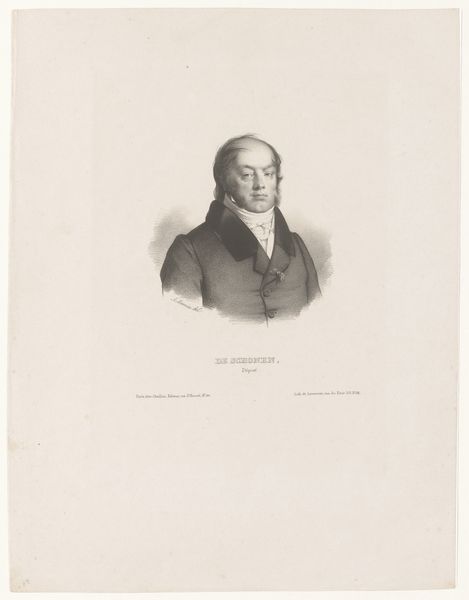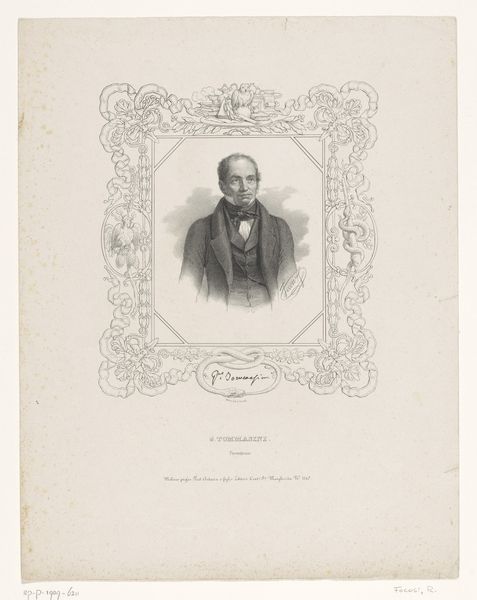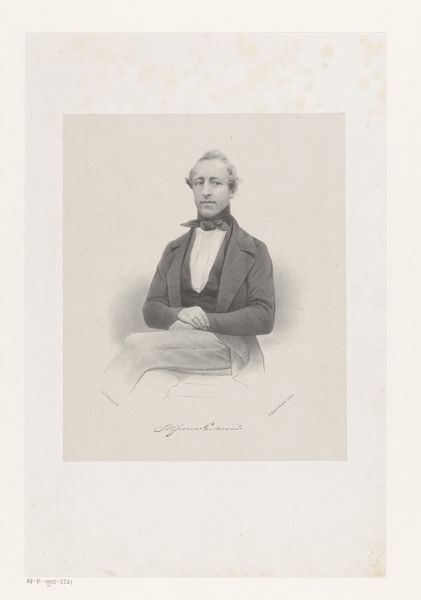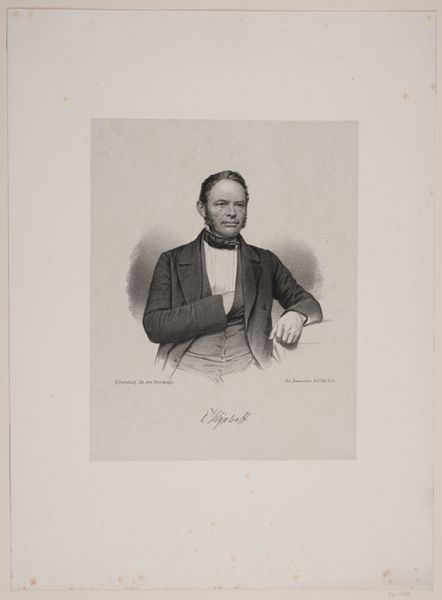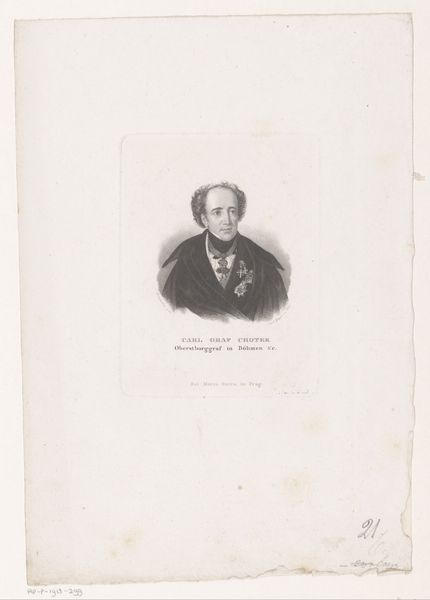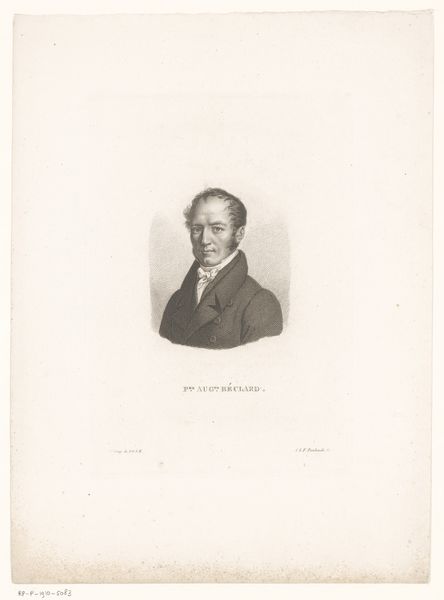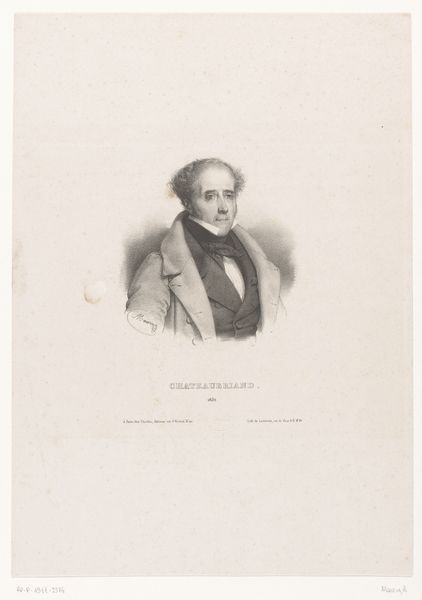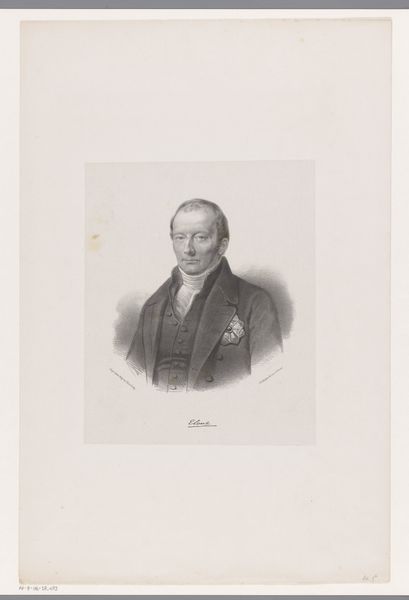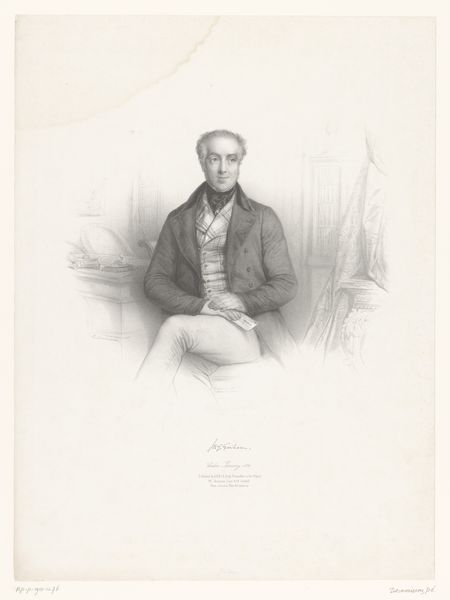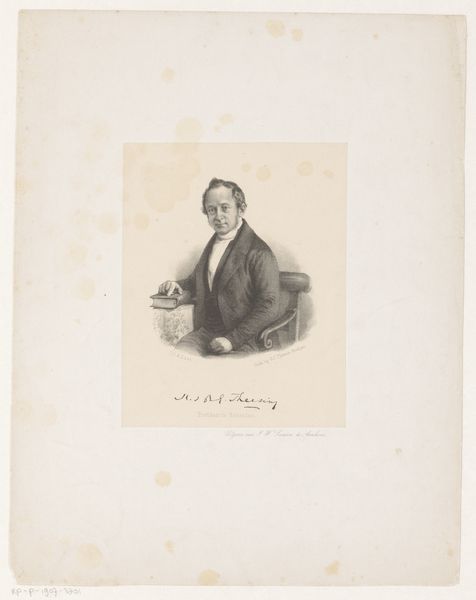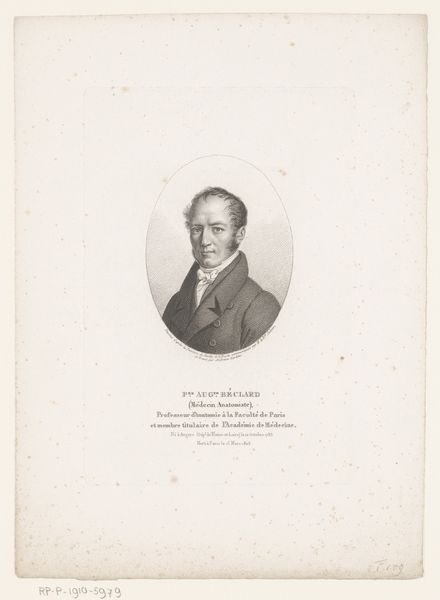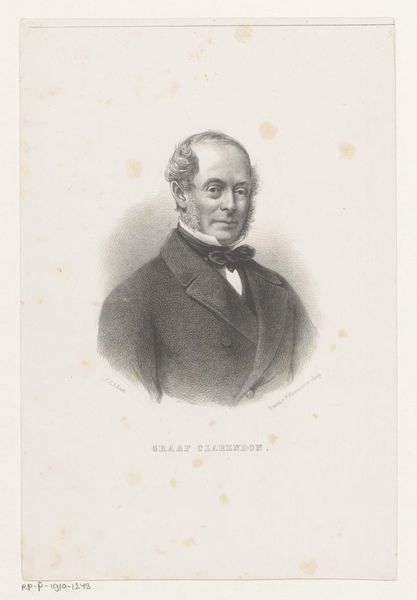
Portret van Adolph Frederik Lodewijk van Rechteren Limpurg, heer van Almelo Vriezeveen en Rechteren 1849
0:00
0:00
lithograph, print, engraving
#
portrait
#
lithograph
# print
#
engraving
#
realism
Dimensions: height 485 mm, width 317 mm
Copyright: Rijks Museum: Open Domain
Editor: We’re looking at a lithograph from 1849 by Johan Hendrik Hoffmeister, titled *Portret van Adolph Frederik Lodewijk van Rechteren Limpurg, heer van Almelo Vriezeveen en Rechteren*. It’s a very formal portrait. What strikes me is how the visual language reinforces established social hierarchies of the time. What’s your interpretation of this piece? Curator: Indeed. The portrait's adherence to realism is telling. Lithography as a medium allowed for wider reproduction, making portraiture accessible to a growing middle class emulating aristocratic display. Note the detail in his garments and medals. How do you think the deliberate presentation of status through dress impacted its contemporary audience? Editor: It's interesting to consider the social mobility implied by that wider access to portraiture, almost a democratization of image-making. Did this contribute to anxieties or shifts in power dynamics at the time? Curator: Absolutely. Consider the rise of nationalism and burgeoning concepts of citizenship in 19th-century Europe. Displaying these marks of aristocracy - through these readily-available images - perhaps attempted to maintain social order at a time of great change, didn't it? It becomes less a portrait of an individual and more a representation of a specific socio-political position trying to negotiate modernity. Editor: So, this lithograph reflects not just an individual likeness but a broader struggle for maintaining power structures amidst social upheaval? Curator: Precisely. It's a window into how visual culture mediated societal anxieties in the 19th century, playing with image, identity, and shifting societal roles. Editor: I had initially seen a simple portrait, but understanding the socio-political context gives it much more depth! Thanks! Curator: My pleasure. It is essential to contextualize art within social circumstances for enriched insights.
Comments
No comments
Be the first to comment and join the conversation on the ultimate creative platform.
